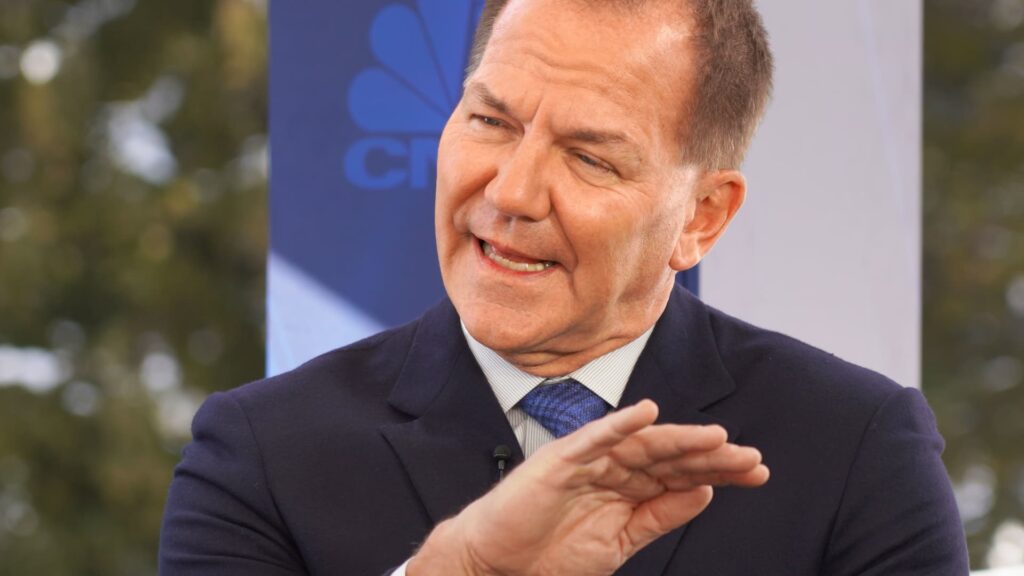Paul Tudor Jones speaking at the World Economic Forum in Davos, Switzerland, January 21, 2020.
Adam Galica | CNBC
Billionaire hedge fund manager Paul Tudor Jones said Tuesday it’s extremely tough to be an investor in risk assets amid escalating geopolitical tensions and the dire fiscal position in the U.S.
“It’s a really challenging time to want to be an equity investor and in U.S. stocks right now,” Jones said on CNBC’s “Squawk Box.” “You’ve got the geopolitical uncertainty… the United States is probably in its weakest fiscal position since certainly World War II with debt-to-GDP at 122%.”
The high-profile investor said the Israel-Hamas war brought on the most threatening and challenging geopolitical environment, which would create a significant risk-off market environment. Meanwhile, a surge in interest rates has deteriorated the fiscal health of the U.S. as the country continues to take on more debt.
“As interest costs go up in the United States, you get in this vicious circle, where higher interest rates cause higher funding costs, cause higher debt issuance, which cause further bond liquidation, which cause higher rates, which put us in an untenable fiscal position,” Jones said.
Jones is founder and chief investment officer of Tudor Investment. He shot to fame after he predicted and profited from the 1987 stock market crash.
He said he would personally wait for a resolution and evaluate the potential impact of the Israel-Hamas conflict before he jumps into risk assets again. Jones said he hasn’t ruled out the possibility of a nuclear war.
“From a personal standpoint, would I be investing in risk assets now and stocks until I saw what the resolution was with Israel, Iran?” Jones said. “Israel is going to respond in some way, shape or form. The determination of whether Iran was actually responsible is enormous because again, it has the possibility to really escalate into something terrible.”
Jones is also the chairman of nonprofit Just Capital, which ranks public U.S. companies based on social and environmental metrics.
Read the full article here



